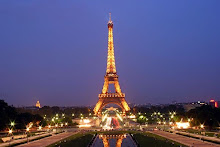The weather forecast was like those often given at home – quite wrong. We had expected heavy rain and near gale force rains. We instead received a cerulean day with bright cottony clouds and no rain threat whatever. Capitalizing on this, we headed south to Antwerp in Belgium, the home of the great painter, Peter Paul Rubens, stopping to pick up Margaret, whom we found standing in the street waiting for us outside her apartment block.
The reality of the European Union has become obvious for me in the past weeks in that political boundaries between the European nations are less apparent than the boundaries between the American states. At American state boundaries one can count on seeing a weigh station for truckers and a large colorful sign next to the roadway, and a couple miles further along a well-maintained visitor information center, well stocked with material on every conceivable attraction within the state. Generally the people working in these places seem happy to expound on the virtues of their realms to newly arrived pilgrims. The only thing one sees between European nations is a small blue sign with the country name and the symbol for the European Union and one has to know precisely where to look for these signs.
It is a long ways from the days when border checkpoints could consume hours of one’s day. I have in the post-NAFTA era spent three days attempting to cross from the United States into Mexico, only to be turned back out of the country after driving thirty miles into the desert. I can’t ascertain if this seamless amalgamation of European countries is good or not. I can’t but wonder if these countries will lose their cultural distinctives over time, with an unpredictable result, not unlike the sometimes unhappy results from mixing several artists’ paints.
In the meantime we ended up in Antwerp, which gave me a lifetime’s worth of visual imagery compressed into a single day. Like all the other cities and villages I have been in during the past weeks I have been stunned at how much of life is lived outside in public spaces. Antwerp provided the grandest experience of this yet, thousands of people in the bright sunlit plaza framed by the baroque facades of bygone centuries. This city somehow managed to avoid total devastation sixty years ago.
In gawking tourist mode, I marveled at the grand facades, the immense train station with enough glass to build a thousand greenhouses. The reception spaces and cafes of the station felt more like something out of a museum or palace – gilded ceilings, baroque plastering on the walls, grand clocks, crystal chandeliers. I think back to the grand stations in America, most long lost to ‘progress’. The grand station in Birmingham was reduced to a weedy field for decades and now its long-faded memory is covered with an interstate. The present train station in Birmingham is nothing but a very small room and hallway covered with gray tile, exactly like the public toilets of the older parts of the London subway. Fortunately, Britain did not ‘progress’ and yet retains all of its grand train stations and theaters. I wonder if ‘progress’ is a synonym for ‘regress’.
In proper Dutch fashion we took cake and coffee in the gilded café of the central station before setting off for a walking tour of the old city. Belgium was once part of the Netherlands, and like Holland, it continually surprised me. We turned a corner and ended up in a small plaza dominated by something that looked like it came from Renaissance Italy – the magnificent west front of the St. Borromeo’s Church – a finely preserved Romanesque church filled with enough paintings by Peter Paul Rubens and his associates to make the museums of the world green with envy. As it turns out Rubens lived and worked here in Antwerp and filled many a church, public building, and palace with some of the 2,500 paintings attributed to his studio. The scale of his house and studio made it clear that his work was highly prized in his day and he profited rather nicely from it. It didn’t hurt that he hung out with guys like Anthony Van Dyck who was an instant celebrated success in his day.
The centerpiece of this city has to be the grand Cathedral of our Lady, a white stone spire that emerges nearly four hundred feet out of the center of the old city. The largest gothic cathedral in the Low Countries, it took 166 years to construct. This imposing structure is built on the plan of a seven-aisle basilica and is the beneficiary of a massive restoration project just completed in 1993. The neo-gothic movement of the late 19th century resulted in this cathedral having much color and ornamentation added to a magnificent edifice that had once been near to complete ruin and which had been completely stripped after the French Revolution. The present result is one of the lightest and airiest cathedrals in Europe. The cathedral is filled with the numinous sounds of a Schyven organ containing 90 registers and 5,770 pipes. It too is a repository of some of the grandest art in the world
Unlike most major cathedrals, the town is built right up to all the cathedral walls excepting for the transept entrances and the west front. The church is nearly invisible from any close aspect, except the west front, which is on a large plaza – a curious phenomenon. The North Tower and the onion dome crossing tower are readily visible from the city once one is a distance away from the cathedral. Happily, this church does not feel like a museum and perhaps will continue to provide a point of gathering for seekers for another thousand years, as has already been the case on this site.
Subscribe to:
Post Comments (Atom)

No comments:
Post a Comment